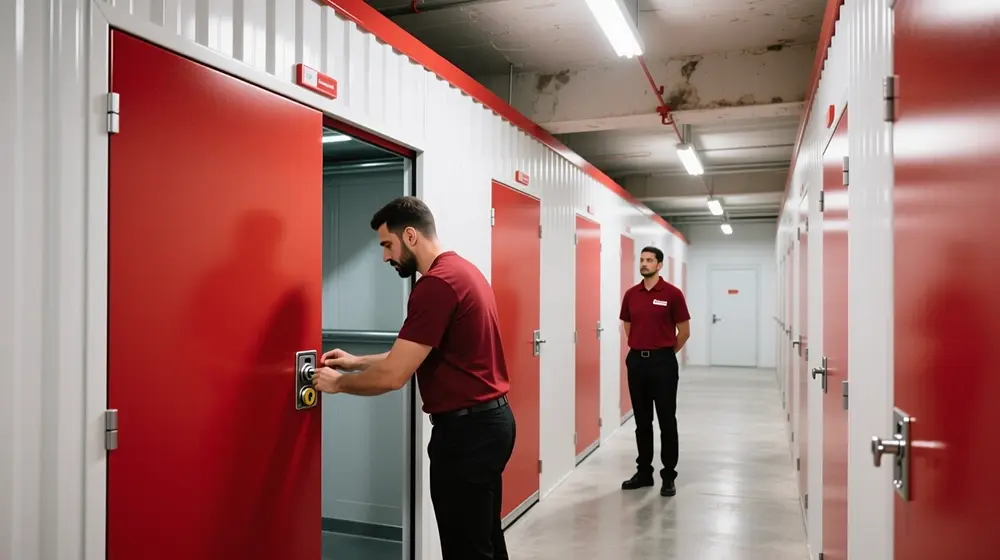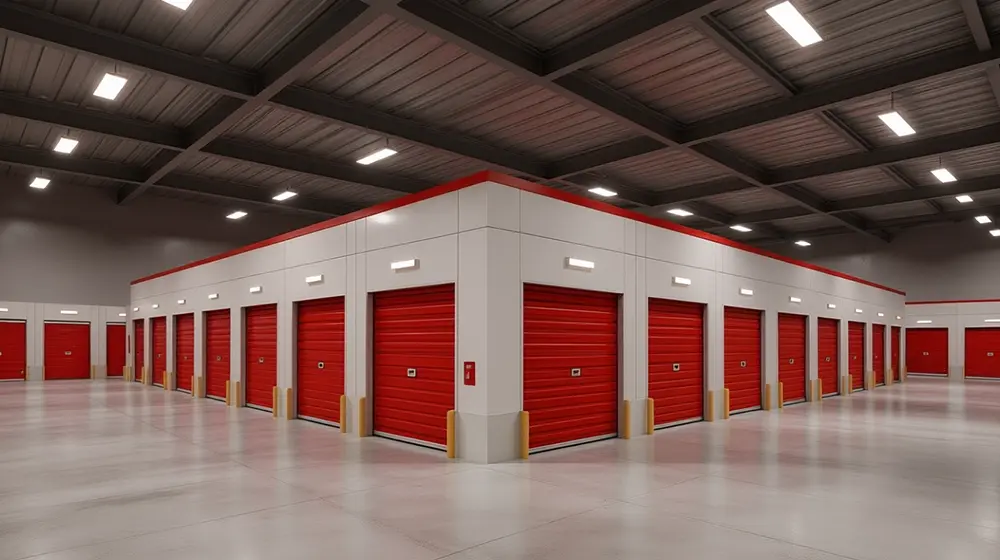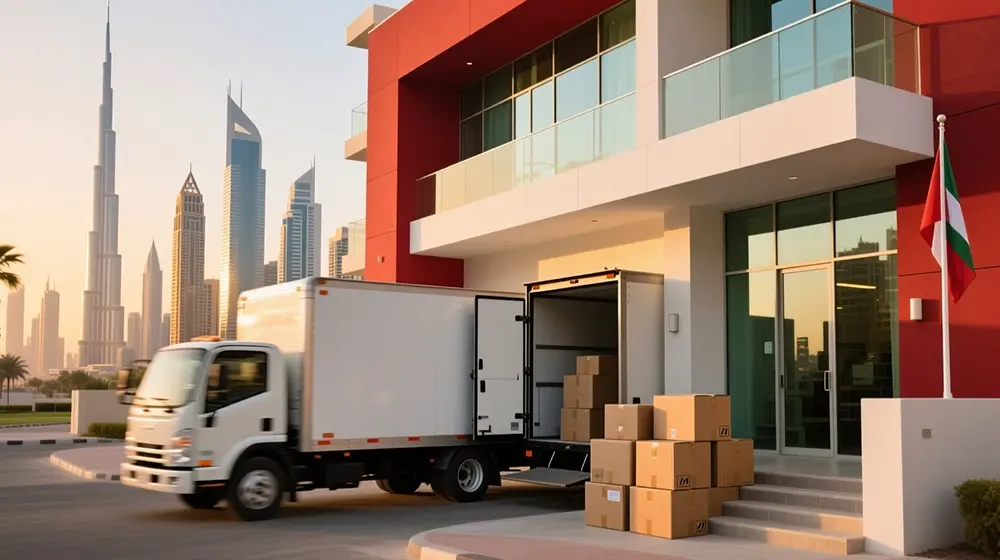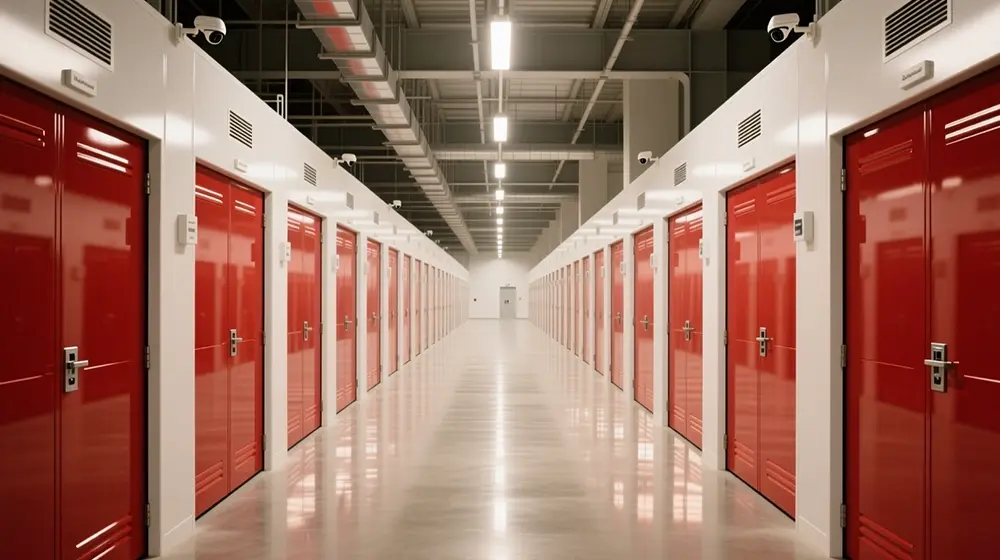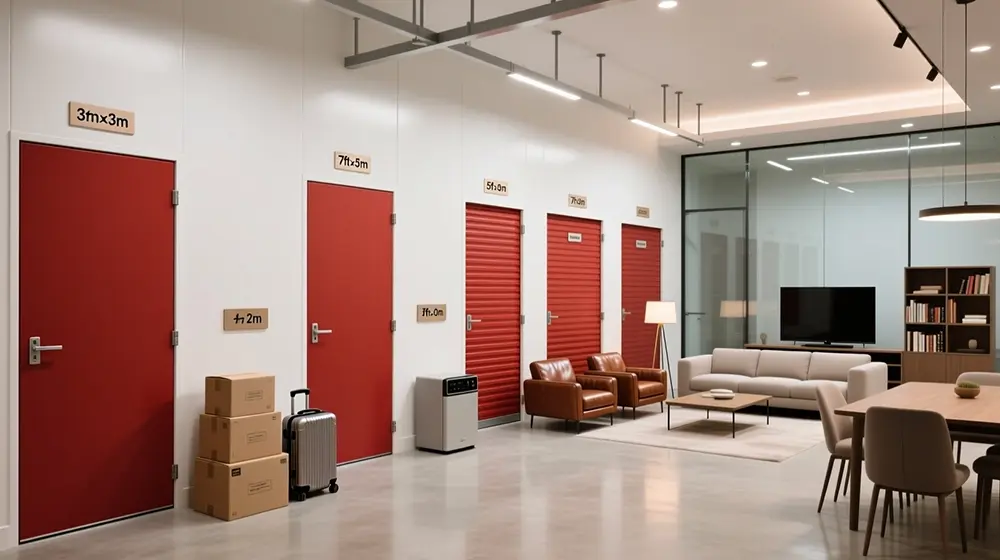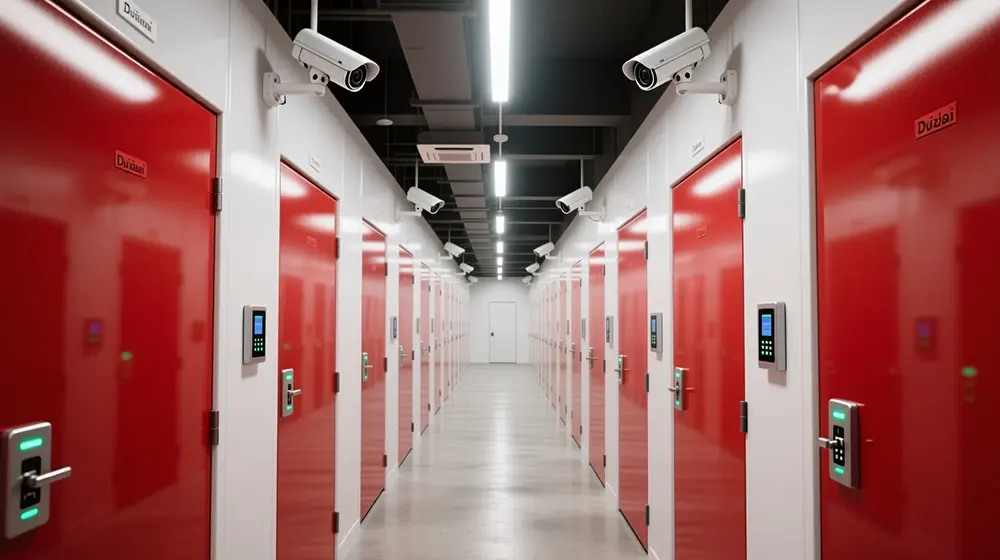Storing personal or business items in Dubai requires careful planning because of the city’s environmental challenges. Regular storage units often expose valuables to extreme heat, seasonal humidity, and even dust storms, which cause long-term deterioration. Climate controlled storage in Dubai solves these issues by regulating both temperature and humidity, creating a safer environment for sensitive belongings.
Facilities that provide climate-controlled storage use a combination of HVAC systems, industrial dehumidifiers, backup generators, and digital monitoring sensors. These ensure stable indoor conditions even when outside temperatures soar above 40 °C or humidity spikes during the night.
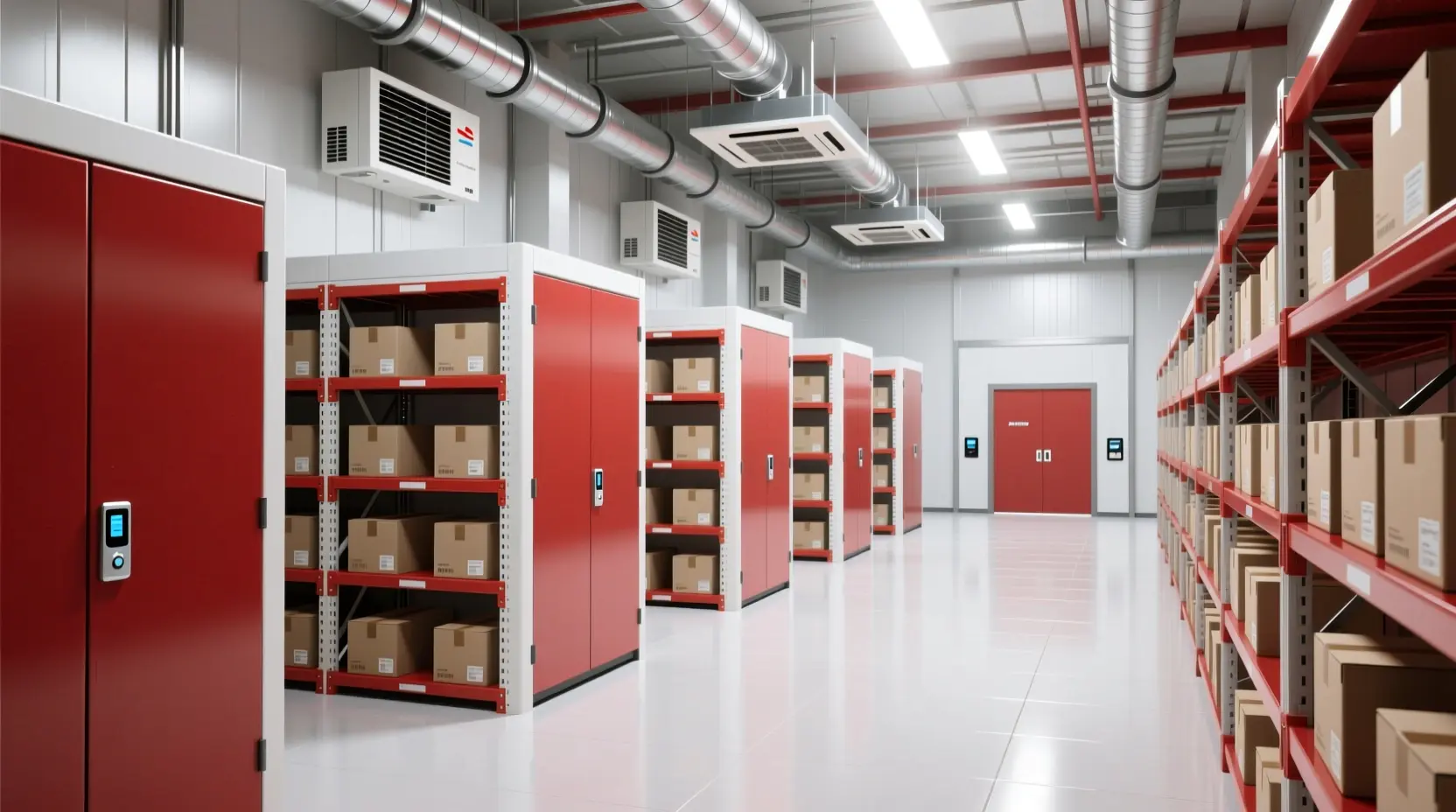
Technical specifications of climate controlled units
Reputable Dubai storage providers maintain international standards for climate control, ensuring that conditions inside the unit remain constant:
- Temperature range: 18–24 °C. This prevents heat damage to electronics, wood, and textiles.
- Relative humidity (RH): 40–55%. This is the recommended band to reduce mold, prevent paper yellowing, and protect musical instruments.
- Backup systems: Redundant HVAC units, alarms, and power supply ensure continuity during Dubai’s peak summer load periods.
- Pest control integration: Regular fumigation and sealed interiors minimize infestation risks.
Why this matters for users
Without climate control, most storage environments in Dubai quickly expose items to permanent damage. Electronics fail when solder joints degrade under heat, furniture warps under RH swings, and documents or photos curl and fade when RH exceeds 60%.
Why Is Climate Controlled Storage in Dubai Important?
Dubai is a global hub for trade, tourism, and luxury living, but its environment is one of the harshest for storing valuables. Unlike temperate cities where regular storage might suffice, Dubai’s triple threat of heat, humidity, and dust storms makes climate control an essential safeguard.
High-value goods such as electronics, antiques, furniture, textiles, and even pharmaceutical inventory degrade far more quickly under local conditions. Flooding incidents, like the severe rains of April 2024, have also demonstrated that uncontrolled storage facilities can be vulnerable to both water ingress and moisture build-up. For families, professionals, and businesses, climate-controlled storage is more than a premium; it is a necessity.
Also Read: What Is Box Storage in Dubai and Why Climate-Controlled Facilities Matter?
Dubai’s environmental risks explained
Heat exposure
- The hot season lasts for 4.3 months, from May 14 to September 24, with an average daily high temperature above 100°F. The hottest month of the year in Dubai is August, with an average high of 106°F and a low of 86°F.
- Electronics begin to fail above 35 °C, with solder joints cracking and batteries swelling.
- Plastics, adhesives, and varnishes soften under prolonged heat, leading to material breakdown.
Humidity fluctuations
- Dubai’s average humidity hovers around 60%, but during the summer months, it can spike between 70-90% in coastal areas. The National Centre of Meteorology often issues weather warnings when relative humidity peaks between 70 and 90 percent in coastal and internal areas.
- Molds take significantly longer to germinate at 19 °C compared with 25.5 °C on building materials that are sensitive to mold growth, while paper and textiles start absorbing excess moisture, leading to stains and brittleness.
- Instruments and wooden items expand and contract, warping or cracking due to RH swings.
Dust and sand intrusion
- Dubai’s frequent shamal winds blow sand and dust into unsealed spaces.
- This accelerates corrosion in electronics and mechanical equipment, while also damaging textiles and finishes.
Flooding risks
- Dubai will spend 30 billion dirhams ($8.2 billion) to boost its rainwater drainage system, aimed at boosting water management capacity by 700%, after the Gulf city was hit by the heaviest downpours recorded in the UAE in 75 years in April.
- Non-climate-controlled facilities, especially ground-level units, face higher risks of seepage, dampness, and secondary mold growth after such events.
Who faces the highest risks without climate control?
Electronics users
- Laptops, cameras, AV gear, and servers are highly sensitive to both heat and RH swings.
- Data shows that electronic failure rates increase by 20–25% in uncontrolled storage.
Art collectors and museums
- Paintings, textiles, and antiques require 21 °C ±1, 50% RH ±5 for preservation.
- Even short-term storage in uncontrolled conditions can cause irreversible fading or warping.
Families with heirlooms
- Documents, photos, and books begin discoloring when RH exceeds 60%.
- Personal archives may lose historical or sentimental value if not protected.
Businesses holding stock
- Retailers storing textiles, cosmetics, and instruments risk 10–15% annual losses from uncontrolled storage

How Much Does Climate Controlled Storage Cost in Dubai?
Climate controlled storage in Dubai commands a premium over standard storage units, reflecting the extra infrastructure (HVAC, monitoring, dehumidifiers, backup power) required to maintain stable temperature and humidity. Local menus, lease rates, and operator economics provide real data to help users benchmark cost vs value.
This section gives you current pricing bands, cost drivers, global comparison context, and Return on Investment (ROI) insights so you can decide whether the price premium is justified for your storage needs.
Local Pricing Bands & Cost Drivers
| Unit Size / Lease Type | Typical Price Range (Dubai) | Key Cost Drivers |
| 25 sq ft lockers | AED 300–400/month | Basic climate control, small footprint, likely minimal extra amenities. |
| 50 sq ft mid-sized rooms | AED 900–1,400/month | More space, stronger HVAC, possibly better location & security. |
| Larger units (100-120 sq ft) | AED 1,400–2,800/month depending on amenities & location | Higher square footage, possibly higher ceilings, better finishes, and more OPEX per sq ft. |
| Warehouse lease (climate-capable facility) | AED 30–60/sq ft/year (base lease before utilities, staffing, etc.) | Lease cost + high OPEX (cooling, electricity, maintenance) + climate control premium. |
Premium vs Standard Storage in Dubai
- Standard self-storage units (non-climate) in Dubai for similar sizes often cost ~20-30% less than climate-controlled units, depending on location and finishes. Premium locations (Downtown, Marina, JLT) often push climate control premium toward the higher end of that range.
- Users choosing climate control also often pay extra for features like 24/7 access, CCTV, insurance, and fire safety, which are sometimes bundled, sometimes optional. These extras add another 5-15% to the base cost.
- In box storage (smaller, parcel-based), climate-controlled options often carry a 15-25% premium over standard box storage. The smaller scale means a smaller absolute cost, but the premium percentage remains meaningful.
Global Comparison & Market Context
Understanding Dubai costs becomes easier when compared to global trends in climate controlled storage:
- The global climate-controlled self-storage market was valued at approx USD 48 billion in 2023, with expectations to reach around USD 85 billion by 2032 (CAGR ~6.5%), driven by increasing urbanization, disposable income, and consumer awareness.
- In the UAE, warehouse lease rates for climate-capable storage are in the AED 30-60/sq ft/year band, similar to what global operators in premium markets might charge after adjusting for cost of living and energy.
- Some industry reports suggest climate-controlled units globally can command 40-60% higher pricing than standard units in markets where climate control is rare. Dubai is more saturated, so the premium is lower (~20-30%) but still material.
Cost Drivers & What Influences Pricing Variation
Several factors cause big price differences between providers and units:
1. Location (central vs peripheral)
- Units in Business Bay, Dubai Marina, and Downtown are significantly more expensive than units in the outskirts because of real estate cost and demand.
- Transport/drive times matter during frequent access.
2. Unit size & ceiling height
- Larger units have better economies of scale.
- Taller ceilings increase volume to cool, raising HVAC and insulation costs.
3. Amenity level
- Features like climate-monitoring sensors, backup power, fire suppression, pest control, and dust filtration all increase cost.
4. Lease term & occupancy
- Longer-term commitments usually earn discounts.
5. Brand reputation & certifications
- Providers to charge a premium.

ROI Insights: When Does the Premium Pay Off?
- To judge whether climate-controlled storage is worth the extra cost, use this framework:
- Premium cost (extra/month) vs expected damage cost without climate control
- Break-even period = (Premium cost × months) ≈ + repair or replacement cost of damage.
| Example Use-Case | Premium per Month | Potential Damage Without Climate | Break-Even (approx) |
| 50 sq ft room (furniture & electronics) | AED 200-300 | Warping, electronic failure costing AED 2,500-4,000/year | ~10-18 months |
| Box storage of documents/photos (6 months) | AED 30-50 | Mold, image loss, paper curling, and possible loss of archives cost AED 800-1,200 | ~12 months |
| Inventory storage (SME, textiles, clothing) | AED 500+ | Losses due to mildew, fabric damage costing 10-15% of stock (AED multiple thousands) | ~6-12 months if items are sensitive |
Lifespan & Cost Savings
In Dubai, heat, humidity, dust, and episodic flooding combine to accelerate damage to electronics, wood, textiles, paper, and artworks. Climate controlled storage in Dubai reduces that damage by holding ~18–24 °C and ~40–60% RH, which slows corrosion, warping, and mold growth. When you compare the monthly climate premium to realistic repair or replacement costs, the math often tilts toward climate control, especially if your items sit through even one Dubai summer.
Why this matters for ROI:
Households using regular self storage in Dubai commonly report avoidable losses of AED 1,500–2,000/year from heat- and humidity-related damage (repairs, replacements, restoration). Facility operators validate the same economics from the other side: climate-capable facilities target 3–5-year CAPEX payback thanks to premium occupancy and pricing.
Mechanisms of damage in Dubai’s climate (and how control prevents them)
Damage pathways are predictable. Heat accelerates chemical reactions and softens adhesives; humidity drives corrosion, mold, and dimensional change; dust abrades surfaces and infiltrates electronics; and sudden moisture events trigger secondary mold. Climate-controlled storage Dubai interrupts those pathways by stabilizing temperature and flattening humidity swings in sealed, monitored interiors.
Key mechanisms (with mitigation):
Electro-corrosion & board failure
- Driver: Sustained RH > 60% + heat; risk increases further with dust and bias (powered gear).
- Mitigation: ~18–24 °C + ~40–55% RH; sealed boxes; desiccant packs for high-value kits.
Mold/mildew growth
- Driver: RH ≥ 60%; spore activity rises in warm, stagnant spaces.
- Mitigation: RH control, air movement, and routine inspection in climate controlled storage.
Wood swelling/warping & finish cracks
- Driver: Daily/seasonal RH swings in Dubai’s hot months, especially coastal nights (70–90% RH).
- Mitigation: Tight RH band ~50% ± 5; slower ramps; cushioned packing for instruments.
Paper/photo cockling & yellowing
- Driver: RH > 60% with cycling; acidity/ink instability.
- Mitigation: Controlled RH; acid-free boxes; unit-level monitoring.
Sudden moisture events (floods/condensation)
- Driver: Storms like April 2024; warm-moist air meeting cooler surfaces.
- Mitigation: Sealed units above grade, pallets, RH control, quick-response SOPs.
Evidence snapshot: Target bands that work (and why)
The most effective storage band for mixed household goods in Dubai mirrors museum basics: cool-steady temperature and mid-range RH. While you don’t need museum-tight tolerances for everything, aiming for ~21 °C and ~50% RH sets a high bar that protects most categories.
- General mixed goods: 18–24 °C, 40–55% RH (facility best practice).
- Museum-grade reference: 21 °C ± 1, 50% RH ± 5 (regional exemplar for sensitive collections).
- Mold threshold: ≥ 60% RH increases risk; keep below to protect paper, textiles, and leather.
Savings model: how to quantify your return in Dubai
Use a simple model to decide if the climate premium makes sense for your items. Estimate your premium per month, your expected non-climate damage, and compute the break-even. For Dubai, consider at least one summer cycle in the horizon—heat + high night RH drive most losses in that window.
Step-by-step:
- Premium/month = climate unit price − regular unit price.
- Expected non-climate damage = realistic repair + replacement exposure if stored through summer (use local reports).
- Break-even months = expected damage ÷ premium/month.
- Decision rule = choose climate control if storage spans summer and items are sensitive/high value.
Dubai price anchors to plug in:
- 25 sq ft: AED 300–400/month (climate).
- 50 sq ft: AED 900–1,400/month (climate).
- Premium uplift: ~10–30% (climate vs regular).
- Household losses (non-climate): AED 1,500–2,000/year (directional).
Sensitivity analysis: what changes your math
Your break-even shifts with seasonality, item mix, and access frequency. If you store through June–September, the risk spike accelerates payback. Dense electronics kits, leather art pieces, and solid-wood furniture push ROI even faster.
Variables that shorten payback:
- Hot season overlap (≥ 1 summer).
- High-sensitivity inventory (electronics, wood, leather, textiles, archives).
- Coastal locations (night RH 70–90%).
- Recent flood-season exposure (moisture risks).
Variables that lengthen payback:
- Short storage terms < 6–9 months outside peak summer.
- Robust/non-sensitive items (sealed plastics, corrosion-resistant metals).
- Peripheral locations with lower RH spikes and lower rental premia.
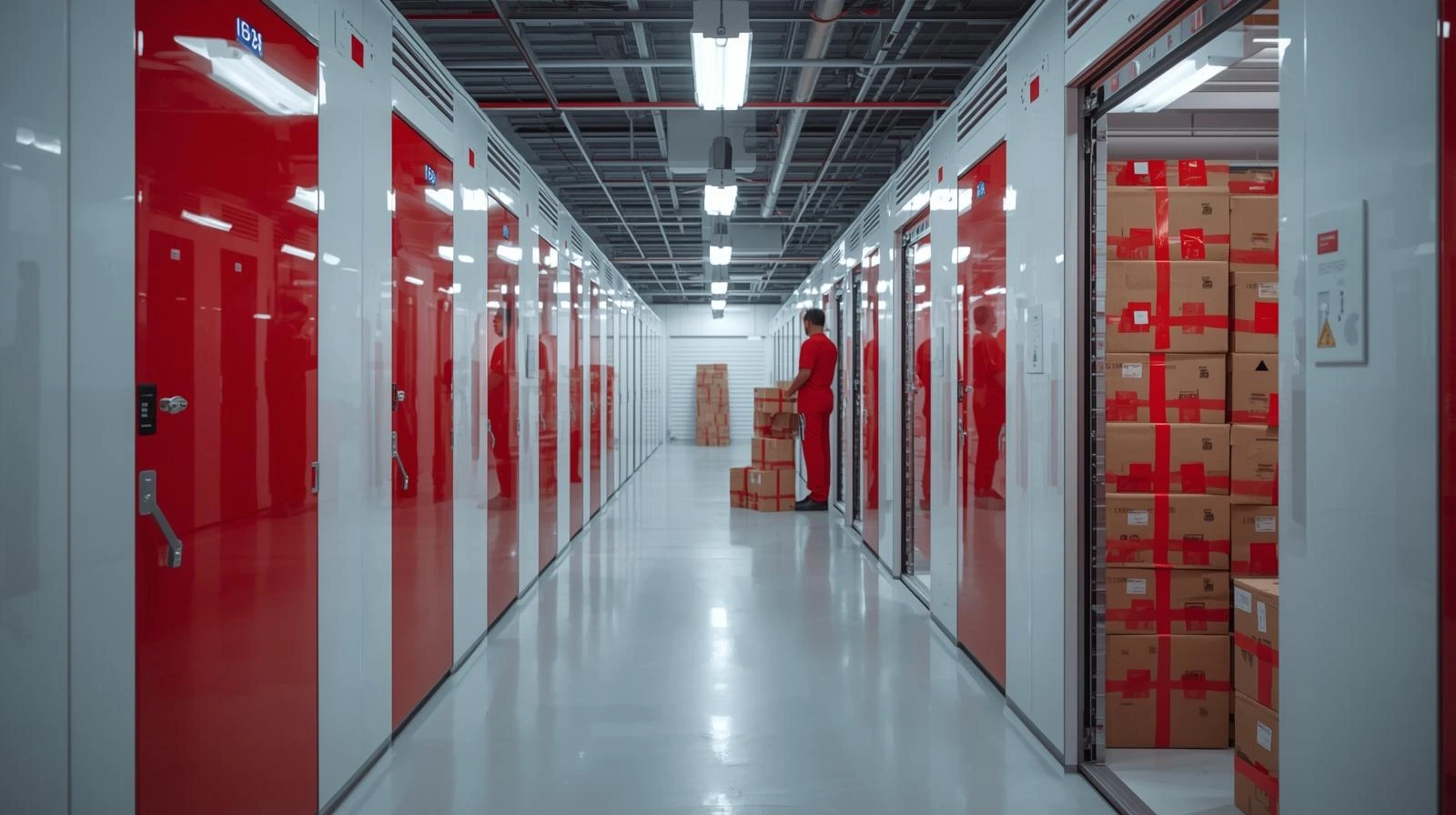
Sector snapshots: where climate control returns the most
Different sectors have different risk/return curves. In Dubai, the most dramatic savings show up where humidity and heat attack materials or where resale value matters.
High-return sectors (examples):
AV/IT & production gear
- Risk: Board corrosion, lens fungus, battery swell.
- Climate gain: Lower failure incidence; fewer repairs and recalibrations.
Fine art, antiques, and luxury textiles
- Risk: Finish cracking, mold, color shift.
- Climate gain: Preserves resale and provenance; aligns with museum-style bands.
SME inventory (fashion/cosmetics/instruments)
- Risk: 10–15% stock loss to mildew/finish damage in uncontrolled storage.
- Climate gain: Smoother sell-through, fewer returns, better customer experience.
Practical preservation set-ups inside climate units (Dubai-ready)
Climate control sets the baseline; storage technique finishes the job. Use the unit’s controlled environment, plus packaging and elevation, to guard against dust and moisture.
Checklist (quick wins):
- Elevate furniture and boxes on pallets or racking.
- Use breathable covers for wood and textiles; avoid plastic wrap that traps moisture.
- Desiccants in sealed totes for electronics and optics.
- Acid-free boxes for documents/photos; label with storage date.
- No tight packing against walls; allow air movement for uniform RH.
- Ask for logs: receive monthly temp/RH graphs from your climate-controlled storage provider.
Quick ROI table
| Use Case (Dubai) | Climate Unit Cost | Regular Unit Cost | Premium/Month | Expected Damage if Non-Climate | Indicative Break-Even |
|---|---|---|---|---|---|
| 25 sq ft (electronics, documents) | AED 350 | AED 300 | 50 | AED 1,500–2,000/year | 10–16 months |
| 50 sq ft (furniture + AV mix) | AED 1,100 | AED 900 | 200 | AED 2,400–4,000/year | 6–12 months |
| SME textiles (100 sq ft) | AED 2,000 | AED 1,600 | 400 | 10–15% of AED 50,000 stock (AED 5,000–7,500) | 10–19 months |
Dubai menus and indices for climate controlled storage bands (25/50 sq ft), operator economics for warehouse leases, and humidity-/mold-risk guidance for textiles and archives.
Final Verdict: Why Climate Controlled Storage in Dubai Is a Smart Investment
Climate-controlled storage in Dubai is not a luxury; it is a strategic safeguard against extreme heat, humidity, dust, and floods. For households, it prevents AED 1,500–2,000 in annual losses, and for businesses, it preserves inventory value and compliance standards. With break-even often achieved in 12–18 months, the extra 20–30% premium pays off quickly. The evidence shows that when storing electronics, furniture, artwork, antiques, textiles, or archives, climate-controlled storage in Dubai is absolutely worth the investment.
Frequently Asked Questions (FAQs)
How much does climate controlled storage in Dubai cost?
AED 350–1,400 per month, about 20–30% more than standard storage.
What temperature do climate controlled storage units in Dubai maintain?
Typically 18–24 °C with a relative humidity of 40–55%.
Who benefits most from climate-controlled storage?
Electronics owners, art collectors, families with heirlooms, and SMEs with sensitive inventory.
How long before climate-controlled storage pays off?
Usually, within 12–18 months for households and 6–12 months for businesses.
Is climate-controlled storage the same as cold storage?
No, climate storage stabilizes room temperature and humidity; cold storage is refrigerated for perishables.
What items absolutely require climate-controlled storage in Dubai?
Electronics, wooden furniture, antiques, textiles, artwork, documents, and photographs.
Are there regulations for climate-controlled storage in Dubai?
Yes, for pharmaceuticals and perishables under DHA and WHO GDP standards.
How large is the self storage market in the UAE?
Valued at USD 602.5M in 2024 and projected to hit USD 859.2M by 2030.
What risks exist in non-climate storage in Dubai?
Heat damage, mold growth, humidity warping, dust intrusion, and pest infestation.
Do operators of climate-controlled storage in Dubai see ROI?
Yes, most facilities achieve CAPEX payback within 3–5 years.


